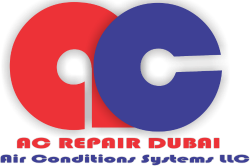What are common signs of HVAC duct problems?
Understanding the common signs of HVAC duct problems is crucial for maintaining a comfortable and efficient indoor environment. HVAC ductwork plays a pivotal role in distributing heated or cooled air throughout a building, ensuring consistent temperatures and air quality in every room. When ductwork develops issues, it can lead to various problems that affect comfort, energy efficiency, and indoor air quality. In this comprehensive guide, we’ll delve into the key indicators of HVAC duct problems, helping you identify issues early and take appropriate action to address them effectively.
Introduction to HVAC Duct Systems
HVAC (Heating, Ventilation, and Air Conditioning) duct systems are intricate networks of conduits designed to deliver conditioned air from the heating or cooling unit to different areas of a building. These ducts are typically made of metal, fiberglass, or flexible materials and are installed within walls, ceilings, or floors to minimize visibility. Properly designed and installed ductwork ensures efficient airflow, balanced temperature distribution, and adequate ventilation throughout the building.

Importance of Maintaining Healthy Ductwork What are common signs of HVAC duct problems?:
Maintaining healthy ductwork is essential for several reasons:
Comfort: Well-functioning duct systems distribute air evenly, preventing temperature imbalances and ensuring consistent comfort levels in every room.
Energy Efficiency: Leaky or poorly insulated ducts can result in significant energy losses as conditioned air escapes into unconditioned spaces like attics or crawl spaces. By addressing duct issues, you can improve energy efficiency and reduce utility costs.
Indoor Air Quality: Ductwork plays a critical role in circulating air throughout the building, including pollutants, allergens, and other contaminants. Damaged or dirty ducts can contribute to poor indoor air quality, exacerbating respiratory issues and allergies.
System Performance: Duct problems can strain HVAC equipment, leading to increased wear and tear, reduced lifespan, and frequent breakdowns. Maintaining clean and well-functioning ductwork helps optimize HVAC system performance and longevity.
Common Signs of HVAC Duct Problems:
Identifying potential issues with HVAC ductwork early can prevent costly repairs and ensure optimal system performance. Here are some common signs that indicate duct problems:
Uneven Heating or Cooling: If certain rooms in your home consistently feel warmer or cooler than others, it could indicate airflow issues or inadequate insulation in the ductwork serving those areas. Uneven temperature distribution suggests that conditioned air is not reaching all parts of the building effectively.
Increased Energy Bills What are common signs of HVAC duct problems?:
A sudden or gradual increase in energy bills without a corresponding change in usage patterns could signal duct problems. Leaky ducts or poorly insulated ductwork can cause conditioned air to escape, forcing the HVAC system to work harder to maintain desired temperatures, leading to higher energy consumption and costs.
Restricted Airflow: Reduced airflow from vents can indicate blockages or obstructions in the ductwork, such as accumulated dust, debris, or even pests. Restricted airflow can compromise system performance, reduce comfort levels, and strain HVAC equipment.
Visible Damage or Deterioration: Inspect visible sections of ductwork for signs of damage, such as dents, holes, corrosion, or disconnected joints. Physical damage to ducts can occur due to age, poor installation, or external factors like rodent infestation or construction activities.
Unusual Odors: Foul or musty odors emanating from vents may indicate the presence of mold, mildew, or other microbial growth within the ductwork. Moisture buildup, often caused by leaks or inadequate insulation, creates an ideal environment for mold and bacteria to thrive, compromising indoor air quality and posing health risks.
Excessive Dust: Excessive dust accumulation around vents or on surfaces indicates that the ductwork may be contaminated or leaking. Leaky ducts can draw in dust and debris from unconditioned spaces, circulating them throughout the building and exacerbating respiratory issues and allergies.
What are common signs of HVAC duct problems?Noises from Ductwork:
Unusual sounds such as rattling, banging, or whistling coming from the ductwork may indicate loose or damaged components, airflow restrictions, or pressure imbalances. Ignoring these noises can lead to further damage and system inefficiencies over time.
Visible Air Leaks: Inspect exposed ductwork for visible air leaks, especially at joints, seams, or connections. Use a flashlight to check for escaping air while the system is running. Sealing air leaks with appropriate materials such as foil tape or mastic can improve system efficiency and comfort.
Condensation or Water Damage:
Moisture buildup or water stains near duct openings, on ceilings, or around vents could indicate duct leaks or inadequate insulation. Condensation within ductwork can promote mold growth, corrode metal surfaces, and compromise structural integrity if left unaddressed.
Short Cycling or Constant Running:
Short cycling (frequent on-off cycling) or continuous operation of the HVAC system can result from duct problems such as airflow restrictions, thermostat issues, or improper system sizing. These issues not only waste energy but also put unnecessary strain on HVAC components, leading to premature failure.as



